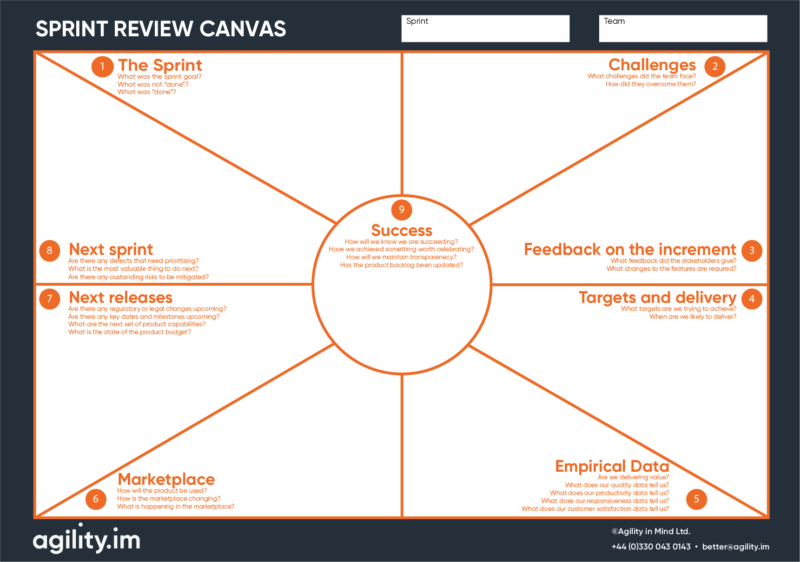The sprint review canvas explained
The sprint review is a critical event in the scrum framework for implementing the empirical process, making the increment transparent, collaborating with stakeholders, and using feedback to guide future sprints. It enables the scrum team to ensure they deliver the highest possible value.
The key elements of discussion are described in the scrum guide; however, when facilitating a scrum event, a little structure helps. The sprint review canvas is intended as an aide-memoire to all of the different elements to be discussed. It enables you to move your scrum team away from a simple demo to a holistic review.
The nine segments of the sprint review canvas
1. The Sprint
This segment helps bring transparency to how the sprint progressed. What was the sprint goal, and was it achieved? What items in the forecast were done and what was not “done”?
2. Challenges
Not all sprints are plain sailing. Often the team faces challenges and it’s useful to share if they were overcome and if so, how?
3. Feedback on the increment
An essential part of the review is to present the increment and gather feedback from stakeholders. This segment also reminds us of the importance of having stakeholders in the review.
4. Targets and delivery
Often teams have specific milestones they’re trying to achieve. Discussion of progress may inform changes to the order of the product backlog. Progress or lack of may affect the viability of a product or feature.
5. Empirical Data
Using data and evidence helps the scrum team focus on the real goal of delivering value. Without measuring value, success is based on nothing more than intuition and assumption.
6. Marketplace
Many marketplaces change rapidly with new technology, competitors, environmental factors, and customer expectations. Reviewing the marketplace helps keep the product focused on where the market is going rather than where it was.
7. Next releases
Since the release cycle is not tied to a sprint, what product releases are upcoming, and what is the forecasted value of them? This helps bring transparency to the product backlog to both the development team and stakeholders.
8. Next sprint
The sprint review is the last opportunity in the scrum cycle to discuss product backlog items. Any urgent items arising from the review for the next sprint are best discussed before sprint planning.
9. Success
All events take a considerable amount of time and effort. They each have a specific purpose. It’s important to reflect on how effective this sprint review was.

